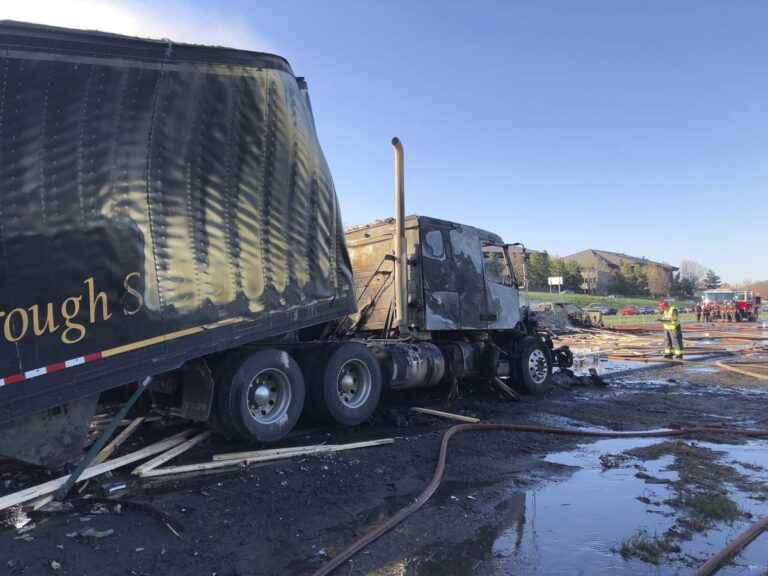WASHINGTON — Although it didn’t have a seat at the witness table for Wednesday’s “Under Pressure: The State of Trucking in America” hearing before the House Highways and Transit, the Alliance for Driver Safety & Security, better known as the Trucking Alliance, submitted comments touching several key areas of the trucking industry.
Among other things, the Alliance said:
- There should be no greater pressure on the trucking industry than to reduce large truck crash fatalities and injuries because large truck crash fatalities can be eliminated.
- No industry segment should be exempt from installing electronic logging devices.
- Thousands of commercial truck drivers are illicit drug users.
- Truck drivers should be 21 years old or older to operate commercial trucks in interstate commerce.
- Large trucks should adhere to a reasonable maximum speed of 65 mph.
- Collision mitigation systems should be required on new commercial trucks.
Steve Williams, chairman and CEO of Maverick USA in Little Rock, Arkansas, who is co-founder of the Trucking Alliance and serves as the coalition’s president, noted that 2017, the last reportable year, there were more than 415,000 large truck accidents in the U.S. in which 4,761 were killed, including more than 600 truck drivers and 148,000 were injured.
“These statistics should alarm every trucking company employer, whose drivers share the road with millions of motorists every day,” Williams said. “The trucking industry is indispensable to the US economy,” Williams recently said. “But the industry has too many accidents. More truck drivers lost their lives in 2017, than in any year in the previous 10 years. We must aggressively address these tragic figures.”
Williams believes a first step is to reverse the industry priorities. “Support progressive safety reforms that make sense for our country and citizens first, our industry second, and our companies third,” he said. “Yet several trucking-specific bills before the House Transportation & Infrastructure Committee would propose the opposite – legislation to benefit companies first, the trucking industry second, and our country and citizens, third. This committee must adopt safety reforms to reduce large truck crashes and reject legislation that would appease special interests but sacrifice public safety in the process.”
Williams noted that ELDs play a major role in reducing truck crashes, yet rather than embrace ELDs for the safety benefits they will achieve, certain industry segments want an exemption from ELDs.
He said there are at least two bills before the House Transportation and Infrastructure Committee that would allow thousands of truck drivers of agricultural goods to operate “off the grid” and without a reliable way to verify whether they are in compliance with on-duty regulations. These bills would compromise public safety.
Another bill would allow any motor carrier that operates 10 or fewer trucks to operate without an ELD.
According to data provided by the American Trucking Associations, over 90 percent of the nation’s motor carriers have 10 or fewer trucks.
In its comments, the Trucking Alliance also renewed its push for hair testing for substance abuse.
Williams said the Alliance recently submitted data to the Department of Transportation showing “compelling evidence” that thousands of habitual drug users are manipulating federal drug test protocols and obtaining jobs as commercial truck drivers.
He said the survey data compared the pre-employment drug test results of 151,662 truck driver applicants, who were asked to submit to two drug tests — a urinalysis and a hair analysis. Almost all applicants held an active commercial driver license. Williams said 94% of the truck driver applicants tested drug-free. However, thousands of applicants failed either or both drug tests.
“Alarmingly, the urinalysis, the only method recognized by USDOT, and relied on by almost all trucking company employers, actually failed to identify most drug abusers,” Williams said. “The urinalysis detected drugs in 949 applicants, about 1% of the population. However, 8.6%, or 8,878 truck driver applicants, either failed or refused the hair test. Put another way, the urinalysis missed nine out of 10 actual illicit drug users.”
The Trucking Alliance is probably the most prominent group that is lobbying against any efforts to allow drivers under 21 to operate in interstate commerce.
“Most states allow teenagers between the ages of 18-21 to operate commercial trucks within their state boundary,” Williams said. “While statistics are lacking, anecdotal evidence suggests these teenage truck drivers operate lighter weight, short trucks, such as delivery vans and straight or panel trucks. Few teenagers actually operate Class 8 tractor-trailer combinations within their state. These big rigs carry a laden weight of 80,000 pounds. These are the tractor trailers used in interstate commerce. Operating these tractor trailer combinations requires elevated skills, considerable experience, maturity and self-discipline.”
Williams said the Trucking Alliance supports a new federal safety standard that would require all large commercial trucks to maintain a maximum speed limit of 65 mph on the nation’s highways.
According to NHTSA, in 2017, speeding was one of the factors for almost 27% of motor vehicle crash deaths. The World Health Organization’s “Report on Road Safety” estimates that for every 1% increase in mean speed, there is a 4% increase in the fatal crash risk and a 3% increase in the serious crash risk. The top speed of large tractor trailer combinations should be limited.
The trucking industry has historically supported truck speed limiters.
As for safety systems, Williams said collision mitigation systems installed in commercial trucks can reduce large truck crashes.
He said the Trucking Alliance supports the conclusions of a 2017 study by the AAA Foundation for Traffic Study. The study, entitled “Leveraging Large Truck Technology and Engineering to Realize Safety Gains,” researched four truck safety technologies, all of which can greatly reduce injuries and fatalities in large truck crashes:
- Lane departure warning systems, which detect when the vehicle drifts out of its lane and warns the driver
- Video-based onboard safety monitoring, which utilizes in-vehicle video cameras and sensors.
- Automatic emergency braking systems, which detect when the truck is in danger of striking the vehicle in front of it and brakes automatically, if needed.
- Air disc brakes, which will eventually be superior to traditional drum brakes, as these systems are continually improved.
Some of the largest trucking companies in the U.S. are members of the Trucker Alliance, including Cargo Transporters, Dupre, J.B. Hunt, KLLM Transport Services, Knight Transportation, Maverick Transportation, Swift, U.S. Xpress and May Trucking Co.
The Trucker News Staff produces engaging content for not only TheTrucker.com, but also The Trucker Newspaper, which has been serving the trucking industry for more than 30 years. With a focus on drivers, the Trucker News Staff aims to provide relevant, objective content pertaining to the trucking segment of the transportation industry. The Trucker News Staff is based in Little Rock, Arkansas.
















Most of what is being said in this article is correct. However what bothers me is the 65 mph maximum speed. If imposed on all trucks, this would essentially create a split speed limit. These have been proven over and over again to be counter productive to safety. You have disarmed the larger vehicle and made it a sitting duck in traffic. In many states that used to have a split speed, trucks were often involved in being rear ended by cars. The real problems are that drivers still are being pressed for time. Trying to make at times tough schedules, and having to put up with delays at the customer. To which many of the aforementioned members of trucker alliance say that paying drivers fifteen dollars an hour after giving up two hours is adequate. They have limited drivers pay for waiting now they also want to limit their speed as well. This translates into drivers being late having to babysit loads without compensation. The real problem for the most part is distracted driving, people in cars who don’t know how to drive around trucks, and horrible infrastructure. If a driver of a large truck keeps a good following distance in front of himself, it doesn’t matter how fast he is traveling.
This isn’t rocket science, you want to cut down on truck crashes, lose electronic logs. We realize they’re here to stay, but drivers are racing the clock, taking more chances etc…
What William said, and the members of the Trucker Alliance are the ones that are in the most wrecks and fatal collisions
No doubt focus should continue to be on safety on ALL on-road vehicles, but one frustrating item is the omission of the fact that the vast majority of fatality accidents involving heavy trucks are not the fault of the truck driver (or his/her truck). The latest statistics indicate over 75% of fatality accidents involving heavy trucks are the fault of the adverse.
Sorry but turning trucks down to 65 mph? As a driver who has been driving a truck at 65 for pass 10 years, I can say u are dead wrong. It’s not safe it actually been proven to be unsafe.. elds are find. But the issue is unless u get shipper and receivers to stop keeping us at docks forever and get truck companies to set realistic safe transit time, and not force drivers to run bat out of hell, nothing going to change.. if there must be a speed limit it should be at a safe REASONABLE speed like 72..65 is way 2 slow.. engine works way too hard as it is and according 2 dealers, when trucks do less than 70 mph, the engine does not do a proper Regen because the engine doesn’t get hot enough. What is needed on the roads is more police in unmarked cars, NOT HARASSING truckers.. but going after other motorist who cut truckers off and do unsafe things around trucks.. other motorist who see mark police cars drive good but when they not around is when they do stupid things